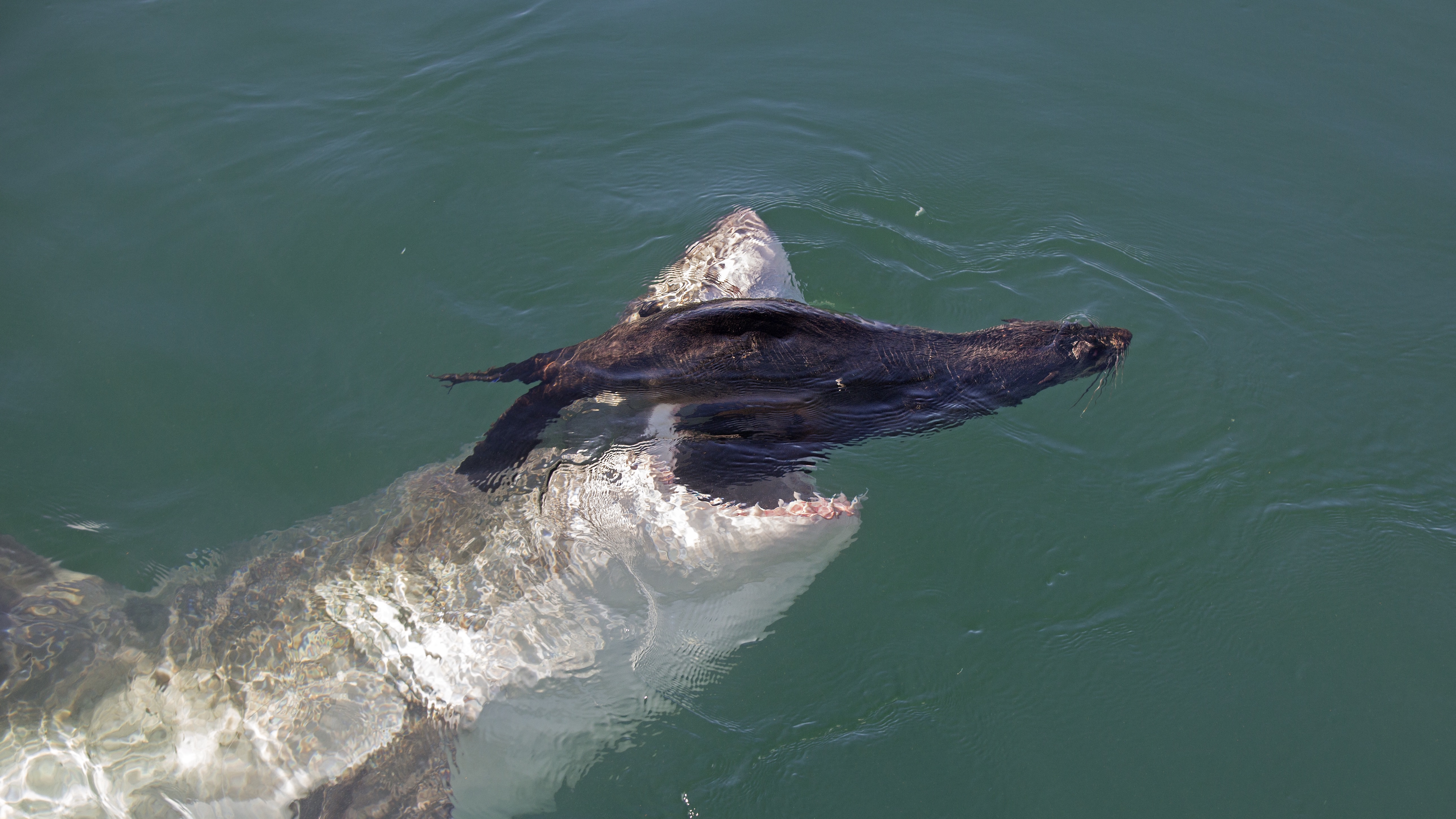MIAMI—While a little added stress may be helpful to flee a dangerous situation, or to meet an approaching deadline, it’s no secret that prolonged exposure to the stress hormone cortisol is linked to health problems. So, what effects does stress have on animals in the wild that need to navigate the same waters as the ocean’s top predator— great white sharks?
Predators are known to impact the population abundances of their prey by killing and consuming them. But can predators in the wild also exert control over their prey from the stress associated with living in high-risk waters?
University of Miami (UM) Rosenstiel School of Marine and Atmospheric Science-led research team found just the right situation—fur seals living among one of the densest populations of great white shark off South Africa’s Western Cape—to test this predation-stress hypothesis in the wild.
In the three-year study, the scientists focused their investigation on six islands in the region where Cape fur seals (Arctocephalus pusillus) colonies have varied seasonal exposure to hunting great white sharks (Carcharodon carcharias). To evaluate the seals’ stress levels in relationship to hunting sharks, the team collected hundreds of seal fecal samples and measured them for glucocorticoid metabolite concentrations (fGCM), a cortisol stress hormone.
The team compared stress hormone levels in seal fecal samples with residency patterns of great white sharks at the different seal colonies based on satellite tagging data. The team also compared seal fecal cortisol concentrations with measured shark attack rates on seals at one the sites.
The researchers found that seals exhibited high stress levels when the risk of great white shark attack was high, at locations where and when the seals were under risk of unpredictable and lethal attack from great whites as the seals they left the safety of an island’s inner perimeter and passed through a gauntlet of white sharks hunting to reach offshore feeding grounds.
“Our findings showed that seals exhibited high stress in the places and at the times when great whites were hunting and the seals had no way of anticipating or effectively preventing a predation attempt from any shark that decided to attack,” said the study’s lead author Neil Hammerschlag, a research assistant professor at the UM Rosenstiel School and UM Abess Center for Ecosystem Science and Policy.
“Comparable stress responses were not detected in places and times where sharks were not hunting. Interestingly, stress responses were also not detected at one island where seals could reduce their risk of attack by using kelp beds and reef as underwater refuges, despite the presence of hunting great whites,” said study co-author Scott Creel, a Professor at Montana State University.
In one location, called Seal Island in False Bay, the seals’ fecal stress levels were highly correlated with weekly shark attack rates. However, seals did not show comparable signs of stress at another location known as Geyser Rock in Gansbaii, which contains kelp beds and reefs that the seals use as natural safe passageways from sharks as the move about the island.
Based on the findings, the authors suggest that predation risk will produce physiological costs in the form of a stress response when risk cannot be adequately predicted or controlled by behavioral responses.
“These results underline the ecological importance of apex predators,” said Hammerschlag. “Any resulting loss in health or survival of prey due to predator-induced stress could have cascading effects on the entire ecosystem and food web.”
The study, titled “Physiological stress responses to natural variation in predation risk: evidence from white sharks and seals,” was published on December 1 in the journal Ecology, DOI: 10.1002/ecy.2049.
VIDEO: https://youtu.be/RgLvDaIuYG4
The study’s authors include: Michael Meÿer, Simon Mduduzi Seakamela and Steve Kirkman from the Republic of South Africa’s Department of Environmental Affairs, Chris Fallows of Apex Shark Expeditions, and Scott Creel from Montana State University. Funding for the study for provided in part by Canon USA and the Herbert W. Hoover Foundation.

